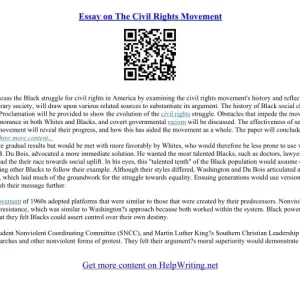
From Tobacco Roads to Tech Hubs: How the South Transformed
The South. A region conjuring images of sprawling cotton fields, languid afternoons on porches, and the haunting melodies of bluegrass. Yet, beneath this romanticized veneer lies a story of dramatic transformation, a narrative etched in the sweat of countless hands, fueled by innovation, and driven by a relentless pursuit of progress. This is the story of the South’s metamorphosis, from its agrarian roots to its current position as a burgeoning hub of technological advancement.
The Legacy of the Past: A Foundation of Resilience
The South’s history is a complex tapestry woven with threads of both triumph and tragedy. The legacy of slavery and the Civil War cast a long shadow, leaving deep societal and economic scars. The post-war era saw the region grapple with poverty, limited opportunities, and a predominantly agricultural economy. The iconic “Tobacco Road,” a term representing the impoverished rural areas, became a symbol of this struggle. This wasn’t merely a physical road, but a metaphor for a system struggling to break free from its past.
However, within this adversity lay the seeds of resilience. The Southern spirit, characterized by its inherent tenacity and resourcefulness, proved an invaluable asset. The region’s people, despite facing immense challenges, demonstrated an unwavering capacity to adapt and overcome.
The Seeds of Change: Industrialization and Diversification
The mid-20th century witnessed the gradual dismantling of the old agricultural order. Industrialization, though often uneven in its distribution, began to take root. Textile mills, furniture factories, and other industries emerged, offering new employment opportunities and fostering economic growth in certain areas. This diversification, however hesitant at first, proved crucial in breaking the cycle of dependence on a single agricultural commodity.
The Rise of the Sunbelt: Migration and Economic Boom
The latter half of the 20th century saw a significant shift in population dynamics. The “Sunbelt” phenomenon, a southward migration fueled by favorable climate, lower taxes, and a growing job market, injected new energy into the Southern economy. This influx of people and capital brought with it new ideas, fresh perspectives, and a surge in entrepreneurial activity.
| Factor | Impact |
|---|---|
| Migration | Population growth, increased workforce |
| Lower Taxes | Attracted businesses and investments |
| Climate | Enhanced quality of life, tourism growth |
| Federal Funding | Infrastructure development, economic stimulus |
The Tech Revolution: A New Frontier
The late 20th and early 21st centuries saw the South embrace a new frontier – the technology sector. Cities like Atlanta, Austin, Raleigh-Durham, and Charlotte transformed into vibrant tech hubs, attracting major corporations and fostering the growth of innovative startups. This wasn’t a sudden shift, but a culmination of decades of gradual change. The investment in education, coupled with the availability of a skilled workforce, created a fertile ground for technological innovation.
This growth wasn’t without its challenges. Issues of income inequality, infrastructure limitations, and the need for diverse talent pipelines still require attention. However, the South’s transformation into a tech powerhouse is a remarkable testament to its adaptability and entrepreneurial spirit.
A Legacy of Transformation: Looking Ahead
The journey from Tobacco Roads to tech hubs is far from complete. The South continues to evolve, addressing past injustices and striving for a more equitable future. The region’s story is a powerful reminder that progress is a continuous process, demanding both resilience and vision. While the past remains a significant part of its identity, the South’s future is being written in the code of innovation, the language of technology, and the spirit of its ever-adapting people. The transformation is ongoing, a dynamic process that promises to shape not only the South, but the nation as a whole.

Additional Information
From Tobacco Roads to Tech Hubs: A Deeper Dive into the Southern Transformation
The narrative of the South’s transformation from a largely agrarian economy reliant on tobacco and cotton to a thriving hub of technological innovation is complex and multifaceted. While the overarching story highlights economic diversification and technological advancement, a deeper analysis reveals nuanced factors driving this change and the persistent challenges remaining.
Beyond the Tech Boom: Diversification as a Key Driver:
The shift wasn’t solely fueled by the rise of tech companies. It’s crucial to acknowledge the broader economic diversification that laid the groundwork. The post-World War II era saw a gradual shift away from a solely agricultural base, with the development of significant manufacturing sectors in areas like automobiles (e.g., the rise of the “automobile alley” in Alabama) and aerospace (e.g., Lockheed Martin’s presence in Georgia). These industries provided crucial infrastructure, skilled labor, and a more robust economy, creating an environment conducive to the later tech boom. This diversification reduced dependence on volatile agricultural markets and created a more resilient economic ecosystem.
Strategic Investments and Policy Interventions:
The Southern transformation wasn’t accidental; it was strategically planned and implemented through significant government investments and policy interventions. State and local governments actively courted businesses through tax incentives, infrastructure development (e.g., improved transportation networks and broadband access), and workforce development programs aimed at creating a skilled labor pool. Examples include the Research Triangle Park in North Carolina, which was consciously developed as a hub for research and technology, attracting major universities and corporations. This proactive approach, often involving public-private partnerships, played a crucial role in attracting investment and fostering growth.
The Role of Universities and Research Institutions:
The concentration of prestigious universities and research institutions in the South acted as powerful catalysts for technological innovation. Institutions like the Georgia Institute of Technology, Duke University, and the University of Texas at Austin have not only produced a highly skilled workforce but also fueled technological breakthroughs through research and development. Spin-off companies from these universities have contributed significantly to the tech ecosystem, creating jobs and stimulating further innovation. The intellectual capital generated within these institutions is a crucial, often overlooked, element of the Southern transformation.
Challenges and Inequalities:
Despite the remarkable progress, the transformation has been uneven, leaving behind significant challenges and inequalities. The benefits haven’t been distributed equally across the region, with some areas experiencing rapid growth while others remain economically depressed. The “digital divide” persists, with access to technology and high-speed internet remaining a significant barrier for many communities. Addressing these inequalities requires focused attention on infrastructure development, equitable access to education and job training, and policies that promote inclusive growth.
Case Study: Atlanta’s Tech Scene:
Atlanta’s rise as a major tech hub serves as a compelling case study. Its success is attributable to a confluence of factors: a strong existing business infrastructure, a growing population, a relatively low cost of living compared to other tech hubs, and significant investments in infrastructure and education. The presence of large corporations like Coca-Cola and Delta Air Lines has also fostered a vibrant business ecosystem, attracting tech companies seeking talent and partnerships.
Conclusion:
The South’s transformation from “Tobacco Roads to Tech Hubs” is a testament to strategic planning, investment, and the adaptability of its economy. However, this narrative requires a nuanced understanding that acknowledges both the successes and the lingering challenges. A continued focus on equitable growth, infrastructure development, and workforce training is vital to ensure that the benefits of this transformation are shared broadly across the region, leaving no community behind. Further research should examine the long-term sustainability of this growth and the potential impacts of future economic shifts.






